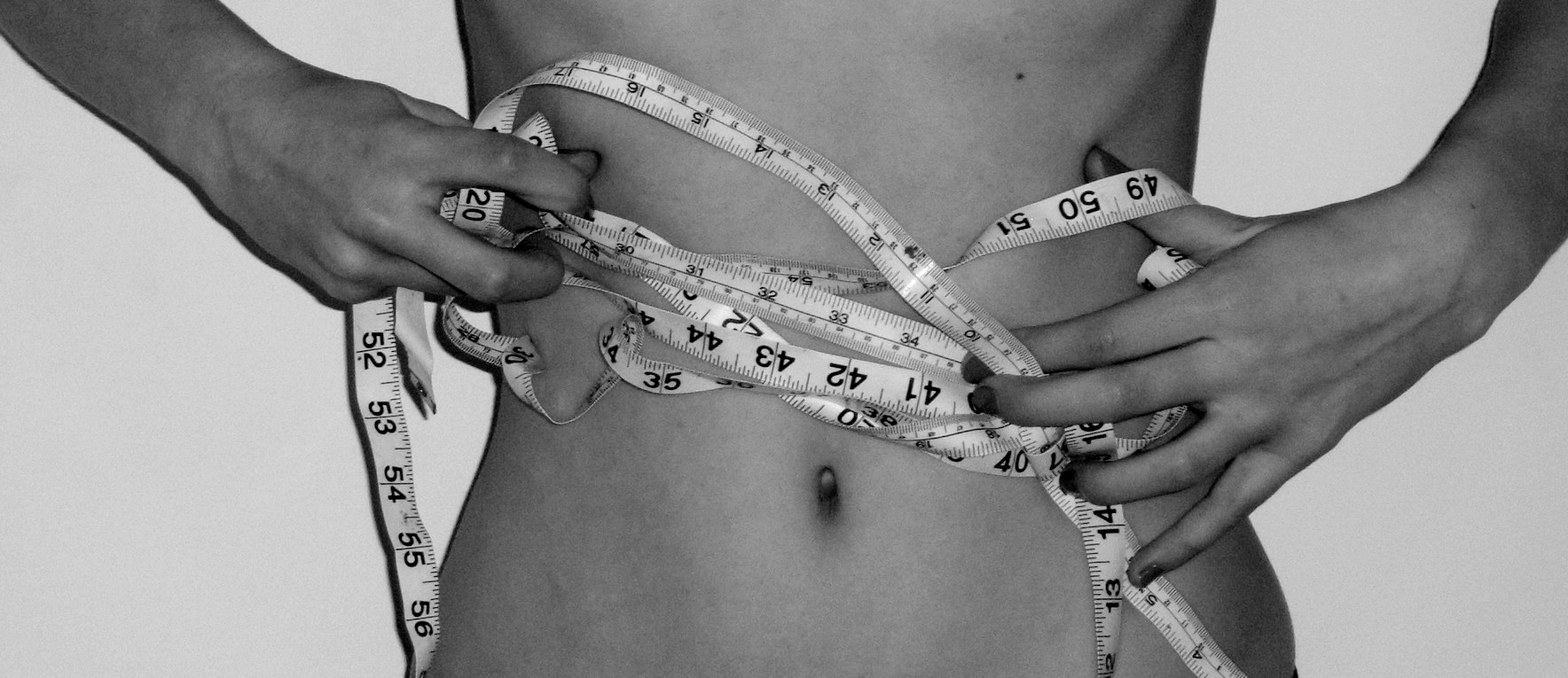Marilyn Monroe is known as one of the sexiest women to ever have lived. She was 5ft 5.5in and weighed around 140 lbs. Monroe is idolized by many women to this day. Although Marilyn was the size of the average woman today we still idolize the average American model today. The typical American model is about 5ft 11in and weighs 117 lbs, a very unhealthy size.
One of the biggest influences we see today are media posts. We follow models and personal trainers or even professional makeup artists in hopes of finding the new “in” look in today’s world to fit in and fit the image of the “perfect person”. Since we spend most of our day online we see lots of the skinnier models who are a size 0 and weigh about 120 lbs. Kelsey Hibberd was interviewed by the BBC . She talked about how when she was in her seventh year she had changed her hair color and stopped eating to try to fit in more.
At least 30 million people of all ages and genders suffer from an eating disorder in the U.S. The greater numbers are among teens. They feel the most pressure in an everyday setting.
Instagram/Children’s Minnesota
Some other influences can include your family, friends, and school.
Survey Data
To see what sort of effect these issues have on my own classmates, I conducted a survey of just over 190 students at Elk River High School this past October. The survey was completely anonymous and was optional for them to take.
Of the 191 participants, in the Body Image Survey, 62.3% were female, 36.1% male, and the rest prefered not to say (those were not counted in results), majority of those who took the survey were in 9th or 10th grade.
66.3% of the 184 participants said the do not like their body. Of 122 responses 78.7% said they have tried to change the way they look. The age they started to dislike what they saw in the mirror was 6th (20.8% of 96 responses) and 7th grade (24% of 96 responses).
Media
Through the survey I conducted at Elk River High School, I found that media is the second biggest influence (72.3%). Although 59.4% of students admit to spending most of their free time looking at social media.
There has never been a single cause towards body dissatisfaction. Media has the biggest influence on younger kids and teens. On an average day children ages 8-18 spend around 7.5 hours on social media or watching television. A survey on nine and ten year old girls 40% had said that they have tried to lose weight. The media has effect on the younger generation already at the age of nine. At the age of thirteen 53% of girls are unhappy with their body. By the age of seventeen this number grows to 78%.
Americans have this idea of the perfect beach body. They try to attain this image every year while also causing harm to their body. Some of the why harm causes long term eating disorders.
About every 62 minutes there is at least one person who dies as a direct result from an eating disorder. “86% of students report an onset of an eating disorder by the age of 20” and “25% of college women binge and purge as a weight loss technique” stated by The Triangle Newspaper.
The NEDA conducted a survey with 185 female college students. Just a little over half reported that they feel the pressure to fit society’s stereotypical body image just to fit in.
A video made by a sociology student to show how the media affects our thoughts on body image. She gives statistics and clips of magazines, tv shows, and ads that we see everyday and how they have an affect on us.
https://www.youtube.com/watch?v=47cbEeSKIZo
video by AliciaJamesScott/Youtube
Alicia shows what others see about themselves. It also gives statistics about anorexia and bulimia. Teens everyday are committing suicide due to the fact that they are unsatisfied with their body. In 2012 when this video was published only 9% of teens tried ending their life, since then the numbers have dramatically increased in only 4 years. Also in the video it tells the height and weight of the average American model compared to the average American woman. Those four measurements are completely different. One is healthy the other is not.
13% of women over 50 engage in eating disorder behaviors. It’s not just teens who are facing these daily struggles.
School
Mic is a news and media company for teens. In December of 2015 they did a study on teenage boys to see if a girl’s body actually has any distraction on them while in school. They also went in depth on a particular school’s dress code and why it is discrimination against girls.
Mic/YouTube
Schools can body shame too. Their dress codes cater towards the males in regards to a distraction free learning environment.
So why are school dress codes only geared towards girls?
Boys will be boys and the girls have to accommodate to them so they don’t get distracted by inappropriate thoughts. School administration have to disrupt the learning day of any given girl just to send her home to change. Schools should allow students to dress chow thye want because it is a way to express oneself.
Dressing in uniforms alludes to an uncreative and very boring school community.
RTV6 | The Indy Channel/YouTube
As stated by RTV6 News team, this girl was dress coded for her pants being too tight. It is hard to find pants that aren’t too tight. Girls pants consists of it being tighter around the thigh and hip region while being looser around the calf and ankle area unless they are skinny jeans then they are almost completely form fitting. Men’s jeans are usually baggy in all regions of the pant. By having a rule that you can not have tight/ form fitting jeans is geared more towards girl.
Girls should be allowed to wear shorts if it is hot out otherwise it’s uncomfortable to sit through the day in the heat with jeans on. Leggings should not be banned because the average girl owns 5 pairs of pants and wears 2. Leggings are no different than skinny jeans or jeggings for that matter. All three outline the leg but are made of different material.
Schools should understand that it is not our intention to distract boys. We are all here to learn. Rarely do you see a boy being called out for wearing something that is offencive.
Family and Peers
5 in 10 girls believe that their family is the biggest influence on their body image as stated by Jen Van Dame from Women’s fund of central Indiana. She also talks about how parents should show a positive attitude and demonstrate healthy behaviors about body image. Parents should encourage their kids to have pride in their body.
Forbes magazine writer Robert Glatter, M.D said that parents need to be more mindful of their relationships with their kids. He had stated that 80% of 10 year olds are afraid of being overweight. Research has shown that a mother’s concern for her own weight is the third most leading cause to body image problems in young teens.
“Girls who believed their mothers wanted them to be thin were two to three times more likely to worry about their weight” – Robert Glatter M.D
Sometimes parents also contribute to how an individual may see their body by criticizing them. Whether it be about how they dress or do their hair.
With peers being the number one influence on body image (77.7% from Body Image Survey). Everyone thinks they need to dress like the celebrities on tv just make it look like they fit in. Students feel they need to have the most expensive clothes because the other kids have them. Not everyone can afford the latest trends and then they think that they will get judged for not owning them.
Peers judge you on your looks because they are ignorant.
Self Esteem
Over all your self esteem is what truly matters. If you feel the need to change your body image you don’t. You should instead change the way you see yourself in the mirror. You should not feel the need to change. Everyone is perfect the way they are.

Kiran Foste / Flickr
If there are things you can realistically change then set that as a goal for yourself. Give yourself some compliments each day. Set a rule as used by Jamie Feldman, where for every bad thing you think you have to follow it up with two nice compliments.
‘Perfect’ people are photoshopped to look perfect.
Treatments and Hotlines
80.2% of students said they have not received treatment for an eating disorder. Of that 80.2% that have not received, 74.1% said they have not thought about treatment either.
Children’s Minnesota/Instagram
If you are among the growing number of people in the world with a body image related issue find a trusted person to talk to. 56.8% of respondents in the survey said they have told a trusted adult about themselves or a friend who is struggling with body image acceptance.
Although if you cannot turn to anyone and you need help call one of these crisis hotlines.
1-800-273-TALK (1-800-273-8255) 1-800-SUICIDE (1-800-784-2433) – National suicide prevention
866-488-7386 – LGBT teens
(310) 855-HOPE (800) TLC-TEEN – Teen crisis line
Featured image by Charlotte Astrid /Flickr







Samuel
“Over all your self esteem is what truly matters. If you feel the need to change your body image you don’t.”
What does this mean?